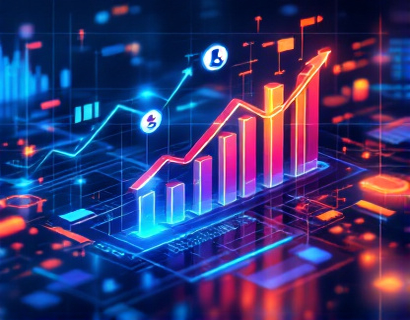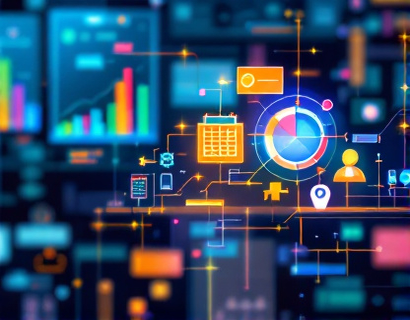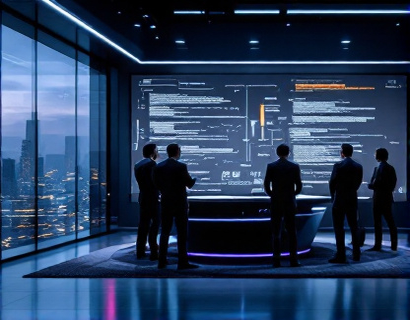Advanced Data Visualization Software: A Catalyst for Business Growth
In today's data-driven world, businesses are inundated with vast amounts of information. The ability to transform this data into actionable insights is crucial for making informed decisions and driving growth. Advanced data visualization software plays a pivotal role in this process by converting complex datasets into intuitive and meaningful visual representations. This article delves into the transformative power of such software, highlighting how it empowers business leaders and analysts to enhance productivity, strategic planning, and overall business performance.
The Importance of Data Visualization in Business Intelligence
Data visualization is an essential component of business intelligence, enabling organizations to extract valuable insights from raw data. Traditional methods of data analysis, such as spreadsheets and reports, often fall short in conveying the nuances and patterns hidden within large datasets. Advanced visualization tools bridge this gap by providing interactive and dynamic representations that make data more accessible and understandable. These tools are not just about presenting data; they are about revealing stories and trends that can inform strategic decisions and drive business success.
Key Features of Advanced Data Visualization Software
Advanced data visualization software offers a range of features designed to enhance the user experience and maximize the value of data insights. Some of the key features include:
- Interactive Dashboards: These allow users to create customizable views that combine multiple visualizations, providing a comprehensive overview of key metrics and KPIs.
- Real-Time Data Updates: The ability to update visualizations in real-time ensures that decisions are based on the most current information, reducing the risk of outdated insights.
- Advanced Chart Types: Beyond basic charts, advanced tools offer specialized visualizations such as heatmaps, network diagrams, and 3D visualizations to cater to diverse data types and analysis needs.
- Seamless Data Integration: Advanced software can integrate with various data sources, including databases, cloud services, and APIs, ensuring a unified view of data across the organization.
- Collaboration Features: Many tools include collaboration tools that allow teams to share insights, work on visualizations together, and provide feedback in real-time.
Enhancing Productivity and Strategic Planning
The intuitive nature of advanced data visualization software significantly enhances productivity. Users can quickly identify trends, outliers, and correlations, reducing the time spent on data analysis and allowing more focus on strategic decision-making. This efficiency is particularly valuable in fast-paced business environments where timely insights can mean the difference between success and failure.
Strategic planning is another area where advanced visualization tools excel. By providing clear and comprehensive visual representations of data, these tools help leaders and analysts align their strategies with data-driven insights. For example, a marketing team can use visualization to track the performance of different campaigns, identify high-performing channels, and allocate resources more effectively. Similarly, a finance team can monitor financial metrics in real-time, enabling proactive measures to manage risks and optimize performance.
Case Studies: Real-World Applications
To better understand the impact of advanced data visualization software, let's explore a few real-world applications across different industries:
Retail Industry
A major retail chain implemented an advanced visualization platform to analyze customer purchasing patterns and inventory levels. The interactive dashboards provided insights into which products were selling well in specific regions, leading to optimized inventory management and targeted marketing campaigns. As a result, the company saw a 15% increase in sales and a 10% reduction in inventory costs.
Healthcare Sector
In the healthcare sector, a large hospital network used data visualization to monitor patient flow and resource utilization. By visualizing data on patient admissions, bed availability, and staff schedules, the hospital improved operational efficiency and reduced wait times. This led to higher patient satisfaction scores and better resource allocation.
Manufacturing Industry
A manufacturing company leveraged advanced visualization tools to monitor production lines and quality control processes. Real-time dashboards helped identify bottlenecks and quality issues, enabling swift corrective actions. The company reported a 20% increase in production efficiency and a significant reduction in defect rates.
Challenges and Best Practices
While advanced data visualization software offers numerous benefits, there are challenges to consider. One common challenge is the initial learning curve associated with adopting new tools. To mitigate this, organizations should invest in training and support to ensure users are comfortable and proficient with the software. Additionally, it's crucial to maintain data quality and integrity, as inaccurate or incomplete data can lead to misleading insights.
Best practices for implementing advanced visualization tools include:
- Define Clear Objectives: Clearly define what you aim to achieve with data visualization, whether it's improving decision-making, enhancing operational efficiency, or driving innovation.
- Choose the Right Tool: Select a tool that aligns with your specific needs and integrates seamlessly with existing systems.
- Focus on User Experience: Ensure the software is user-friendly and accessible to non-technical users to maximize adoption and utility.
- Continuously Monitor and Optimize: Regularly review the effectiveness of visualizations and make adjustments as needed to ensure they remain relevant and insightful.
Future Trends in Data Visualization
The field of data visualization is rapidly evolving, driven by advancements in technology and changing business needs. Some key trends to watch include:
Artificial Intelligence and Machine Learning
AI and machine learning are increasingly being integrated into data visualization tools to automate the analysis process. These technologies can identify patterns, predict trends, and even suggest visualizations based on the data, further enhancing the user experience and insights.
Augmented and Virtual Reality
AR and VR technologies are opening new possibilities for data visualization, allowing users to interact with data in immersive and intuitive ways. For example, VR can provide a 3D environment for exploring complex datasets, making it easier to understand spatial relationships and interactions.
Real-Time Collaboration
As remote work becomes more prevalent, real-time collaboration features are becoming essential. Future visualization tools will likely focus on enhancing collaboration, enabling teams to work together seamlessly regardless of their physical location.
Conclusion
Advanced data visualization software is a powerful tool for businesses looking to transform complex data into actionable insights. By enhancing productivity, supporting strategic planning, and providing intuitive visual representations, these tools play a critical role in driving business growth and success. As technology continues to advance, the potential for data visualization to revolutionize how we understand and interact with data is immense. Organizations that embrace these tools and best practices will be well-positioned to thrive in an increasingly data-driven world.











































